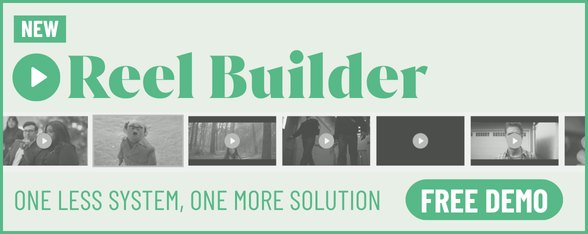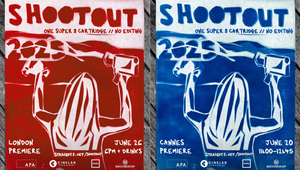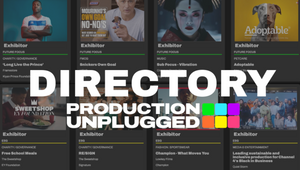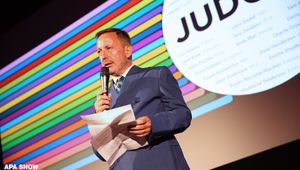
Emerging Technologies That Are Getting Brands Excited – and How They’re Being Applied

On May 1st, the Advertising Producers Association (APA) will debut Production Unplugged – a new kind of event designed to break down silos and get brands closer to production companies. Part expo, part deep-dive learning experience, Production Unplugged is a bold, fast-paced forum built around six curated zones that highlight the themes modern marketers care most about: agility, smart production, customer experience, ESG, innovation, and connectivity.
But this event isn’t just a logistical rethink, it’s a strategic one too. Shaped by APA’s foundational report earlier this year, it reflects the growing recognition across the industry that production needs direct connection with brands.
Each of Production Unplugged’s six zones is overseen by a curator from a brand, and the Future Focus Zone is being shepherded by Ivan Pols, chief creative officer at navigation app what3words. That segment of the event promises to help guests to discover how innovation and technology are shaping new possibilities and enhancing creative and business impact.
Before joining the tech brand in 2016 and helping them to build a multinational, full service, in-house studio and marketing team in a global tech company, he was global creative director at both Ogilvy and adam&eveDDB, for the likes of Dove, Unilever and Philips. In Canada, he worked on projects like ‘Diamond Shreddies’, the cereal campaign that ended up in advertising textbooks, business books, TED Talks, and spoof videos. Now, he ensures that design, communication, and our creative culture creates maximum return on investment across the what3words business.
In case you haven’t downloaded the app, what3words splits the world into 57 trillion 3-metre squares. Each square has a three-word address. Quite a conceptual basis for a business, but one with great power. “An address is meaningless without a reason, without a use case, without a story,” says Ivan. “Your three-word address has meaning. It’s useful because there’s something of value there for you. And I think that’s how we need to be thinking about everything we produce. Does it actually add some value? Or is it simply more?”
Ivan is approaching his curatorship of the Future Focus Zone from that perspective too. Production Unplugged holds great promise for him because production experts can help companies to find that value in storytelling. “I’m hoping that production companies get better at explaining themselves to brands directly,” he says. “They need to get much, much better at those relationships and adapting the way they work – not just with other very creative companies, but also with companies that want to be creative, but don’t necessarily have the same way of describing it.”
He’s trying to think of the zone as a translation service, putting cutting-edge tech ideas in production in terms that can be understood by an audience that is not necessarily thinking about this stuff all the time.
Technological progress in the production side of the business has been an ongoing journey of increasing access, as Ivan sees it. “The ability to do more and more high-end finish with less and less investment,” he explains. Whether it’s people using AI to make Studio Ghibli-style content en masse, or turning themselves into action figures, creativity is more readily at our fingertips than ever. These same tools could be applied for brands’ production needs, he notes. Like demonstrating a product’s functionality. “Access to things which were locked behind skill sets, expensive software, and a steep learning curve, for me, is the biggest technical change,” he adds.
Other tools that have become democratised include browser-based editing tools like Canva. Ivan plays with slicker tools like Premiere and After Effects, but with Adobe Express or Canva, sometimes the results are more suited to a TikTok or a quick bit of content. “What’s fascinating is how those very basic tools can be used to create certain effects. Using a simpler tool can actually create content that is more platform-appropriate,” he says. “I have editors who are brilliant at After Effects—but actually, that ruins their TikTok videos. So it’s quite interesting: some specialists need to get better at using publicly accessible tools, because those are what’s correct for the platform.”
More technically, developments in tech like rendering engines have been transformative, but have sort of crept up on the industry slowly. “The ability to just hit the play button and have your animation play back in real time is astonishing,” says Ivan. When he used to make animated ads back in the mid '00s, he remembers the struggle. “Back then, you only saw what the animation actually looked like at the very end of the process. It took so long to render the layers and composite them back together[…] but the ability to actually make things you choose to make and have them appear almost instantaneously is a massive change. And the fact that I can have that on a laptop in front of me, instead of a whole studio…”
“On the flip side, the negative side of that is: time is gone,” he continues. “The waiting time — when you could think and ponder and strategise, when you’d use your imagination to improve what you were working on — that’s gone. Because you get the result straight away, so you're just reacting in the moment. You don’t get space to think.”
With that access to tech, culture has changed. The curtain has lifted on how so many types of content are made, so clients are less willing to trust the process and leave the specialists to do what they do. Ivan can see where this mentality has emerged from. “You can’t write code with surprises in it. And the same now goes for film production.”
Understanding between brands and production partners is aligning more and more. And it goes both ways. “It's not just about the creative production side having to make themselves understood to their clients,” says Ivan, responding to the findings of the APA’s report last year upon which Production Unplugged was built, which showed that marketers want to hear directly from production companies. “It's also up to the clients to be able to make themselves understood and listen. So that dialogue, there’s an expectation on both sides to improve,” he says.
The work that will be showcased on the Future Focus stand demonstrates a lot of the tools that are really making an impact on how production is done today, combined into new workflows. Like an LLM being used to create a script that is then fed into ElevenLabs, which is then fed into a rendering engine to create a video of clothing. “The use of connected software components to generate video content at scale is quite exciting,” Ivan enthuses. “That kind of workflow – stitching together different bits of tech – is really interesting.
“The issue is scale, though. A setup like this is almost useless for one-offs, because it takes so long to set up. You’ve got to get the chat prompts right, configure the APIs, make sure you’ve got the credits... Once it’s up and running, it’s like a machine – it just spits out tonnes of outputs, millions of them. In those cases, it’s like a production line. The tech has definitely made it possible to create a massive volume of very similar, but individualised assets. That’s great. But it’s not great when, say, you just need to make three ads for one specific market, about a particular product feature. You can’t just hit a button and have them appear. That level of bespokeness is still a barrier.”
As much as AI is powering production’s future. Ivan is confident that human makers remain in the driving seat. “There are still lots of situations where the human being is your fastest option. And we will be for a long time, I think. Because we’re far more adaptable and quicker at making connections, literally connecting one bit of software to another. I know there’s a lot of chat about agentic AI and that stuff. It might be good one day, but right now, it's bad at making critical decisions back and forth across different bits of software, then interacting with human beings to get feedback. Thinking about the audience still requires human beings. So we’ll be OK”
Those humans need to be equipped with the right tech, but for brands, Ivan warns about getting too wrapped up in the tools. “It’s about really knowing what your story is and how you connect with your audience, and then looking for a technique that allows you to do that in a way that enhances the message.
“How can you be memorable? To be remembered as a brand that means something to someone – who has a story attached to it – that’s beyond just asking, ‘Did I jump on the latest meme? Did I make something that got me some likes?’
“I've just been watching, overall, the massive decline of organic interaction. It’s just dying because it’s swamped.”
The production partners Ivan wants to showcase to brands at Production Unplugged aren’t focusing on how to make more content faster. “They’re the ones focused on good storytelling,” he says. “They're using techniques to enhance an idea and make it memorable – not simply to make more of it.
“You can spend as much money as you like – try and brute-force it, try and buy clicks – but that’s a diminishing game. It’s more about using technology to enhance, to be exciting and interesting, but always remembering: what does it mean to you?”
Tech hype bubbles expand and then they pop. It’s happened before and Ivan reassures brands that there are constants. “The trick is not to get distracted, but to remember the fundamentals of how human beings absorb information: stories.
“If you rely on your mechanical ability to make and version designs then you’re in trouble. Because it’s mechanistic. You need to be more. It’s hard, though, because over the last 10 or 15 years we’ve turned designers and editors into that. There’s a people revolution – a thinking revolution – that has to happen alongside this AI revolution.”
If you would like to attend Production Unplugged, you can purchase tickets here. We’re offering 25% off for LBB members with the code ‘LBBEXCLUSIVE25’.













